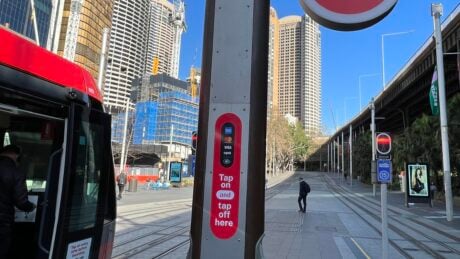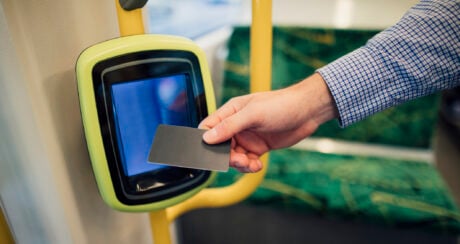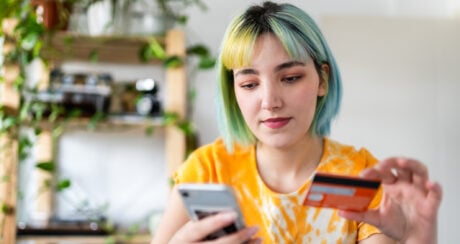Melbourne’s public transport system includes trains, trams and buses. Operated by Public Transport Victoria, the best way to get around is with the myki card — Melbourne’s version of Sydney’s Opal card. Unlike the Opal card, passengers can’t use a credit card to pay for a ticket when boarding public transport. However, the ability to use credit cards will change in the coming years, as an overhaul of myki readers to accept credit and debit card payments is expected by 2026.
Public transport in Melbourne
Melbourne is the only city in Australia with a charming and convenient tram network. You can also move around the city by train or bus. There are multiple train stations in Melbourne’s metropolitan area, and a bus network with routes that run to major hubs, such as sporting venues.
How much it costs to use public transport in Melbourne generally depends on where, when and for how long you plan to travel.
Zones
Melbourne’s public transport system has three zones:
- Free Tram Zone covers Melbourne’s central business district (CBD) and provides free tram travel. However, if you start or finish a journey beyond this area, myki is required.
- Zone 1, which includes the CBD and inner-city suburbs, has trains, trams and buses,
- Zone 2, which covers the suburbs and beyond, also has trains, trams and buses.
If you travel entirely in Zone 1, or between Zones 1 and 2, you’ll pay the ‘Zone 1+2’ fare. If you travel exclusively within Zone 2, you’ll only pay the ‘Zone 2’ fare.
Fares
There are fares for both daily and two-hour trips:
- Zone 1+2: $5.30 for two hours or $10.60 for a daily fare.
- Zone 2: $3.30 for two hours, or $6.60 daily fare.
When you board, the initial two-hour charge applies. If you continue travelling after two hours, it automatically switches to a full-day fare. There is a $7.20 daily fare cap on weekends and public holidays.
You can also buy a myki Pass — available for seven days or anywhere between 28 and 365 days — to save on the cost of travel. Weekly passes are $53 for Zone 1+2 ($14.40 less than seven consecutive daily Zone 1+2 fares) and $33 for Zone 2.
🤓 Nerdy Tip
Melbourne has reduced fares for children, students, seniors, groups and companies. Free travel options are also available for passengers with permanent physical disability, carers, and other special circumstances. Check to see if you are eligible for concessions before you travel.
More about myki
Myki — a reloadable travel card — is the primary payment method for Melbourne public transport. The funds you load on the card are called ‘myki Money’.
You can top up myki Money funds through the Public Transport Victoria website or app, at pay stations, affiliated shops or by calling 1800 800 007. Unlike Sydney’s $10 minimum load, myki’s top-up amount starts at $1. To avoid reloading on the run, top-up the equivalent of the two-hour fare.
While myki is typically a physical card, digital options, which function similarly to virtual credit cards, are also available. Android users can use Google’s digital wallet with myki Mobile to top up credit and tap on public transport. As the infrastructure is updated, myki Mobile will extend to iPhone users, which may also open up tap-on payments for Apple watches.
Can you use a credit card instead of myki?
Not yet. While the trials for credit and debit card payments will begin in 2024, this service won’t be fully operational until 2026. It will be implemented progressively across the city, so passengers might have an opportunity to experience it earlier. Contactless payments are becoming more common and will likely be the norm in the coming years.
How to use a credit card for Melbourne transport
Although you can’t use your physical credit card to tap on yet as you do with a myki, you can buy your fare and load your pass with a credit card (as long as it’s an Australian-issued Mastercard or Visa). All the different ways to top up your myki accept credit and debit cards. If you’re topping up at a 7-Eleven or a myki-affiliated store, ask if they charge a merchant fee.
Depending on which credit card you have, you can earn reward points with every myki top-up order. Aside from sign-up bonuses, paying for expenses on a credit card is the other main strategy to build reward points. As with every credit card transaction, it’s important to pay off your card at the end of the month before the interest kicks in. Otherwise, you might end up paying extra for public transport when you factor in the credit card interest and fees.
With some pre-planning, you can map your journey around Melbourne to leverage the free trams and early morning weekday trains to reduce public transport costs. Free public transport isn’t available in all major cities, so make use of it when you can. When you pay for public transport, consider the associated benefits.
DIVE EVEN DEEPER

Opal Card Vs. Credit Card
What’s the more convenient and cost-effective way to navigate Sydney and its surrounds — Opal or credit card?

Can You Tap On With A Credit Card On A Train?
You can tap on with a credit or debit card on a train in Sydney, Newcastle, Brisbane, Gold Coast and Adelaide — and soon in Melbourne and Canberra.

Can You Tap On With A Credit Card On A Bus?
Tap and pay is convenient for in-person transactions — but can you do it on public transport?

Credit Card Vs. Debit Card: Differences, Benefits and Uses
Credit cards are short-term loans that must be repaid, and debit cards are linked to your bank account and spend your own money.
